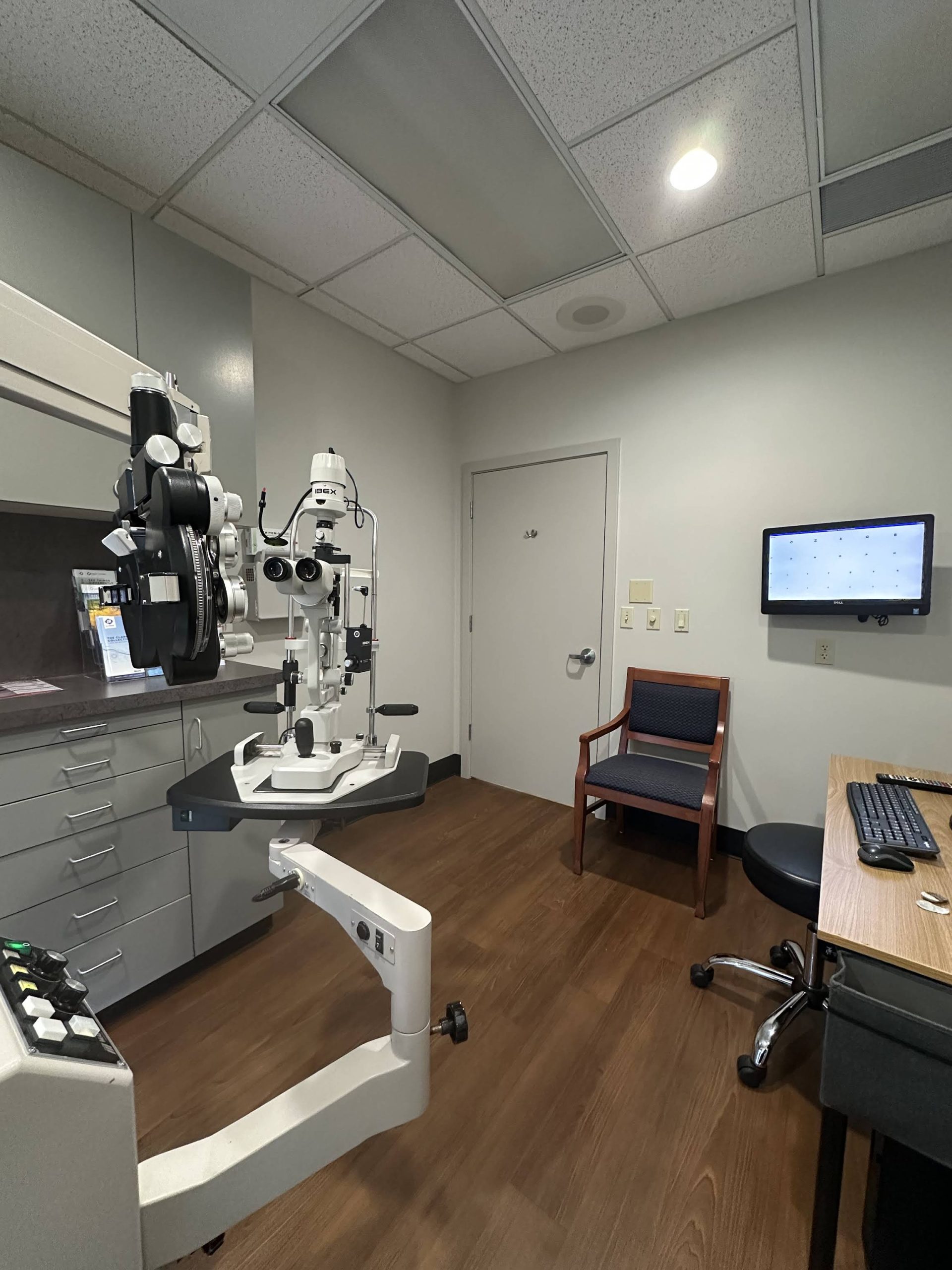 In recent years, advancements in ophthalmology have transformed the way cataracts and refractive errors are treated. Among these innovations, light adjustable lens (LAL) implants have emerged as a groundbreaking option for patients in Bothell, WA. These lenses offer a unique solution that allows for personalized vision correction, ensuring that patients achieve the best possible outcomes following cataract surgery or lens replacement.
In recent years, advancements in ophthalmology have transformed the way cataracts and refractive errors are treated. Among these innovations, light adjustable lens (LAL) implants have emerged as a groundbreaking option for patients in Bothell, WA. These lenses offer a unique solution that allows for personalized vision correction, ensuring that patients achieve the best possible outcomes following cataract surgery or lens replacement.
What Are Light Adjustable Lens Implants?
Light adjustable lenses are a type of intraocular lens (IOL) that can be adjusted after they have been implanted in the eye. Unlike traditional IOLs, which are fixed in power and position, LALs allow for post-operative adjustments using a specialized light treatment. This innovative approach provides patients with a customized vision correction experience, enhancing their overall satisfaction.
How Do Light Adjustable Lenses Work?
The mechanism behind light adjustable lenses is both fascinating and effective. After the lens is implanted during cataract surgery, the patient undergoes a series of light treatments. These treatments utilize ultraviolet (UV) light to modify the lens’s shape and optical power. By carefully controlling the exposure to light, the ophthalmologist can fine-tune the lens to achieve optimal vision correction.
This adjustability is particularly beneficial for patients who may have specific visual needs or those who have experienced changes in their vision due to age or other factors. The ability to make adjustments after surgery means that patients can achieve their desired level of vision without the need for additional surgical procedures. Furthermore, the process is non-invasive and typically requires only brief sessions, making it a convenient option for patients who lead busy lives.
Benefits of Light Adjustable Lens Implants
The advantages of light adjustable lenses are numerous, making them an appealing option for many patients. One of the primary benefits is the enhanced precision in vision correction. Traditional lenses often require patients to settle for a compromise in their vision, whereas LALs can be tailored to their specific needs.
Additionally, patients who choose light adjustable lenses often report higher levels of satisfaction with their visual outcomes. The ability to make adjustments post-operatively means that patients can achieve a level of clarity that is more aligned with their expectations. This personalized approach can significantly improve the quality of life for those who undergo cataract surgery. Moreover, the adaptability of LALs can also reduce the likelihood of needing glasses for reading or distance vision, allowing patients to enjoy a more active lifestyle without the hassle of corrective eyewear.
Another noteworthy benefit is the potential for reduced recovery time. Because the adjustments can be made without additional surgical intervention, patients often find that they can return to their normal activities more quickly. This is especially advantageous for those who may have demanding jobs or personal commitments. The innovative design of light adjustable lenses also means that they can accommodate a range of vision conditions, making them suitable for a wider demographic of patients, including those with astigmatism or presbyopia. As a result, LALs are revolutionizing the way cataract surgery is approached, offering a glimpse into the future of personalized eye care.
Who Is a Candidate for Light Adjustable Lens Implants?
Not everyone is a suitable candidate for light adjustable lenses, but many individuals can benefit from this innovative technology. Generally, candidates include those who are undergoing cataract surgery or those seeking to correct refractive errors such as myopia, hyperopia, or astigmatism.
Factors Influencing Candidacy
Several factors determine whether a patient is a good candidate for LALs. Age, overall eye health, and the presence of other eye conditions can all play a role. Patients with specific corneal issues or those who have had previous eye surgeries may need to consult with their ophthalmologist to evaluate their suitability for LALs.
Moreover, patients should have realistic expectations regarding the outcomes of their surgery. While light adjustable lenses can significantly enhance vision, it is essential for candidates to understand that individual results may vary based on their unique circumstances.
The Procedure: What to Expect
The process of receiving light adjustable lens implants involves several steps, beginning with a comprehensive eye examination. This evaluation helps the ophthalmologist determine the best course of action tailored to the patient’s needs.
Preoperative Consultation
During the preoperative consultation, the ophthalmologist will assess the patient’s eye health, vision requirements, and overall medical history. This thorough examination is crucial for determining the appropriate lens power and ensuring that the patient is a suitable candidate for LALs.
Patients will also receive detailed information about the procedure, including the benefits and potential risks associated with light adjustable lenses. Understanding these factors helps patients make informed decisions about their eye care.
The Surgical Procedure
The actual surgical procedure for implanting light adjustable lenses is similar to traditional cataract surgery. It is typically performed on an outpatient basis and involves the removal of the cloudy lens and the insertion of the LAL. The surgery is usually completed within a short timeframe, and patients can often return home the same day.
After the lens is implanted, the patient will schedule follow-up appointments for the light adjustment treatments. These sessions are crucial for fine-tuning the lens and ensuring optimal vision correction.
Post-Operative Care and Adjustments
Following the surgery, patients will need to adhere to specific post-operative care instructions to ensure a smooth recovery. This may include using prescribed eye drops, avoiding certain activities, and attending follow-up appointments.
Light Adjustment Treatments
Once the eyes have healed sufficiently, patients will begin the light adjustment treatments. These sessions are typically painless and quick, lasting only a few minutes. During each session, the ophthalmologist will use a specialized device to deliver precise UV light to the lens, gradually adjusting its power to achieve the desired vision correction.
Patients may require multiple adjustments, depending on their individual needs. The process is designed to be flexible, allowing for fine-tuning until the optimal vision is achieved. This adaptability is one of the key benefits of light adjustable lenses, setting them apart from traditional options.
Conclusion: A New Era in Vision Correction
Light adjustable lens implants represent a significant advancement in the field of ophthalmology, offering patients in Bothell, WA, a personalized approach to vision correction. With the ability to adjust the lens post-operatively, patients can achieve optimal visual outcomes that cater to their unique needs.
As technology continues to evolve, the future of vision correction looks promising. For those considering cataract surgery or lens replacement, light adjustable lenses may be the ideal solution, providing a level of customization and satisfaction that was previously unattainable.
Consultation and Next Steps
For individuals interested in exploring light adjustable lens implants, scheduling a consultation with a qualified ophthalmologist is the first step. During this appointment, patients can discuss their vision goals, learn more about the procedure, and determine if they are suitable candidates for this innovative technology.
Embracing the advancements in eye care can lead to improved quality of life and enhanced visual clarity. With light adjustable lenses, the journey to better vision is not only possible but also personalized.
If you’re ready to take the next step towards crystal-clear vision with light adjustable lens implants, Overlake EyeCare is here to guide you through the process. Our commitment to exceptional eye care ensures that you receive personalized service and the most advanced lens technologies available. Dr. Mary Coday and our team are experts in cataract surgery and intraocular lens selection, including specialized lenses for astigmatism reduction and simultaneous distance and near correction. We utilize cutting-edge Lenstar technology for precise measurements, ensuring the best outcome for your eyes. Don’t wait to enhance your vision and improve your quality of life. Contact Us Today to schedule your comprehensive consultation and discover the difference that Overlake EyeCare can make for you.

